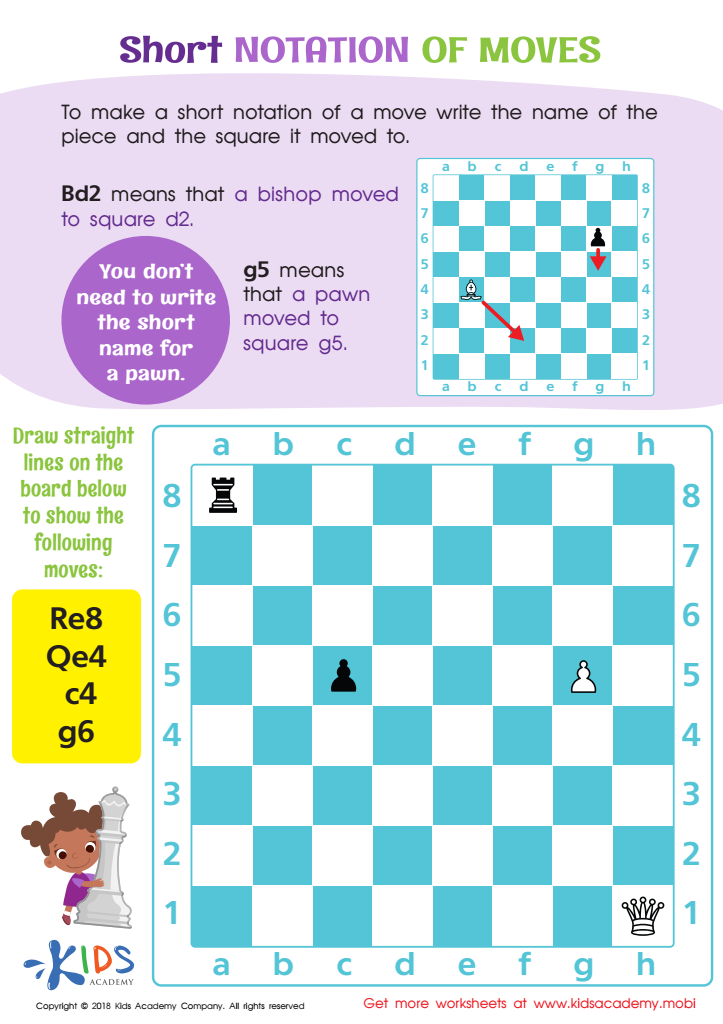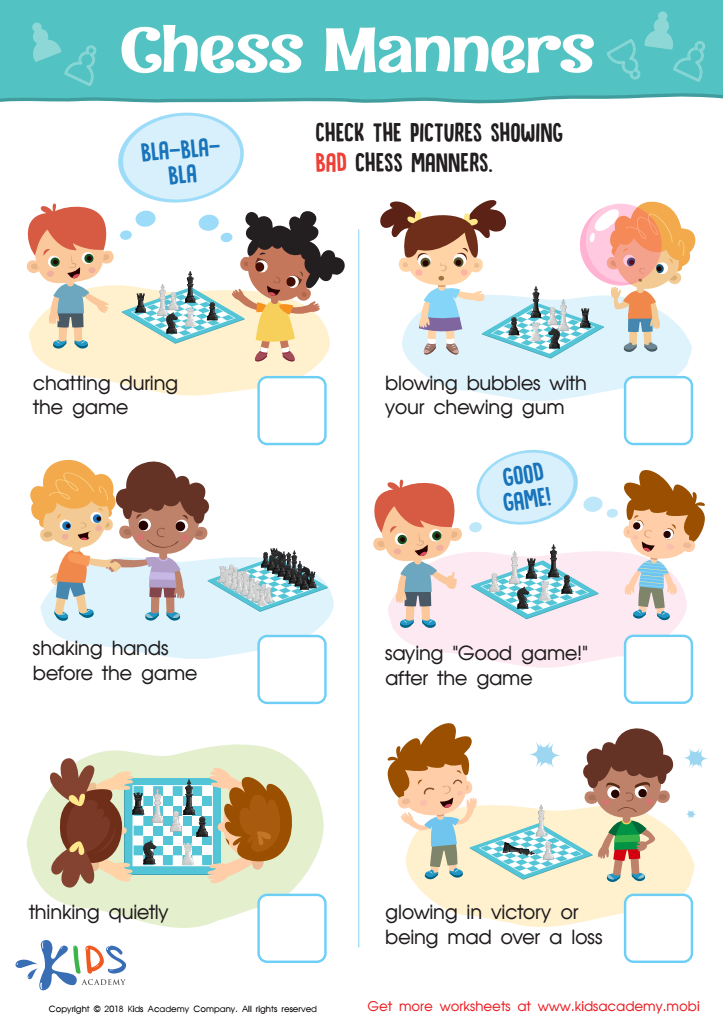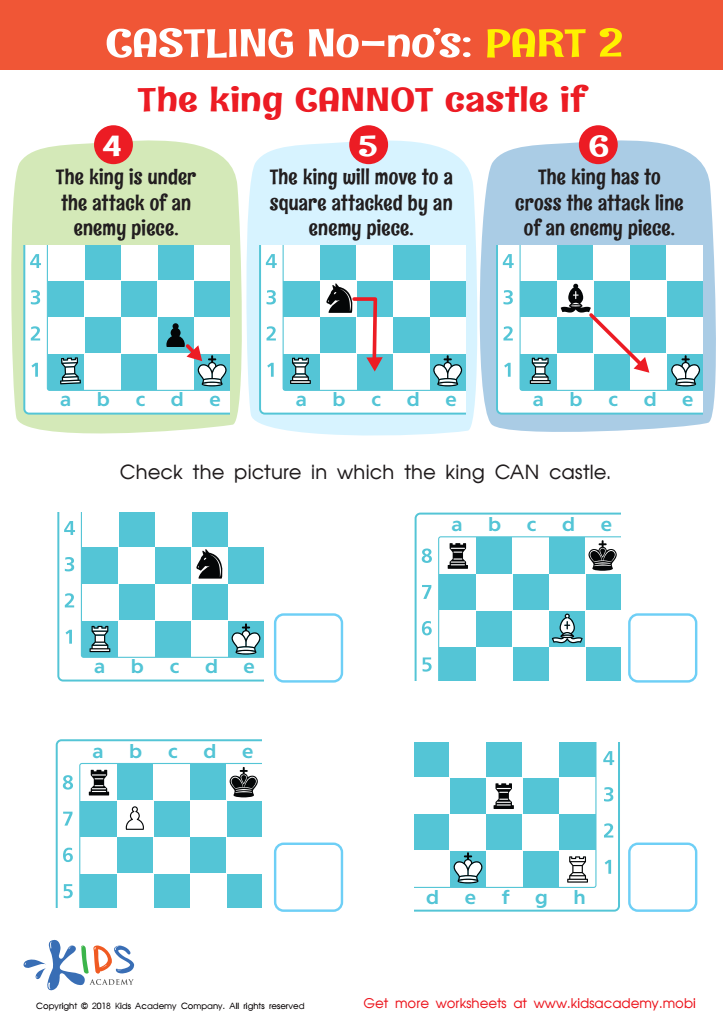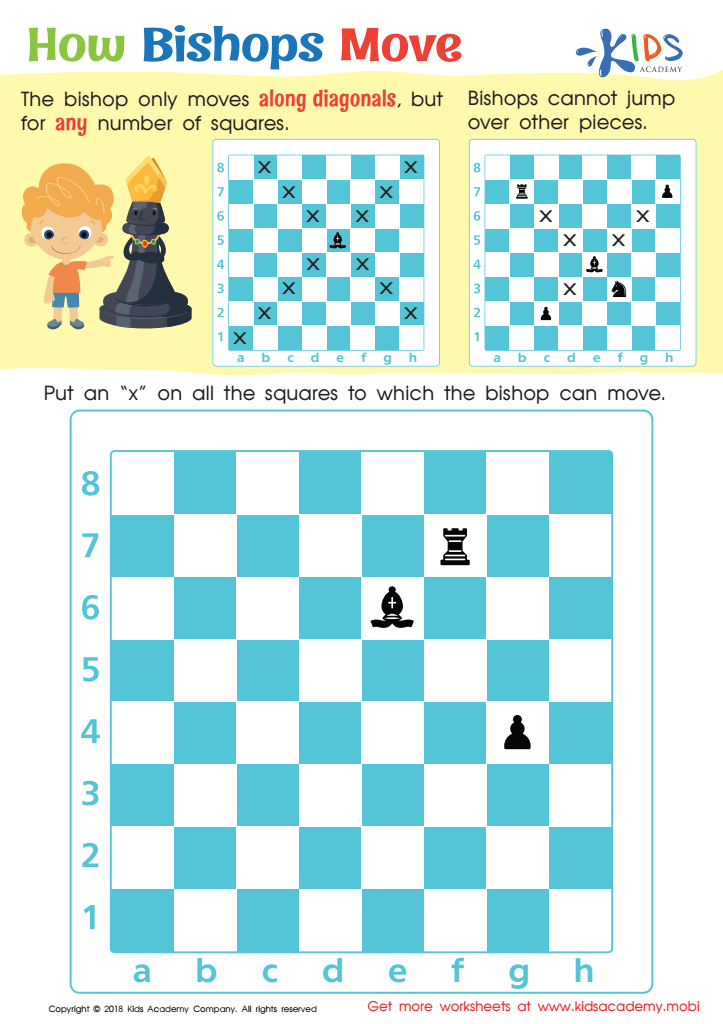Chess rules understanding Worksheets for Kids
4 filtered results
-
From - To


Short Notation of Moves Worksheet


Chess Manners Worksheet


Castling No - no's: Part 2 Worksheet


How Bishops Move Worksheet
Question/Answer
How to test a Grade 1 student’s Chess rules understanding skills?
To test a Grade 1 student's chess rules understanding, you can ask them to set up the chessboard correctly, name all the chess pieces, demonstrate each piece's legal moves, and describe special rules like castling or en passant. Additionally, you could have them play a simplified game to observe their application of rules in practice.
How to train the Chess rules understanding skill in Grade 1 students learning about Chess?
To train Grade 1 students in understanding chess rules, start with the basics: introduce one piece at a time and its movements, using simple, clear language. Utilize hands-on practice with a chessboard for visual and physical reinforcement. Incorporate engaging activities such as storytelling with pieces as characters, and use puzzles and games that focus on individual piece movements.
What are some effective activities to train students’ Chess rules understanding skill when teaching them about Chess?
To enhance students' understanding of Chess rules, consider activities like playing mini-games focusing on specific pieces' movements, conducting Chess puzzles that emphasize rule application, organizing simulated game scenarios to practice rules in context, and using interactive chess apps or software for guided practice. These methods reinforce rules through practical application and problem-solving, making learning engaging and effective.

 Assign to the classroom
Assign to the classroom












